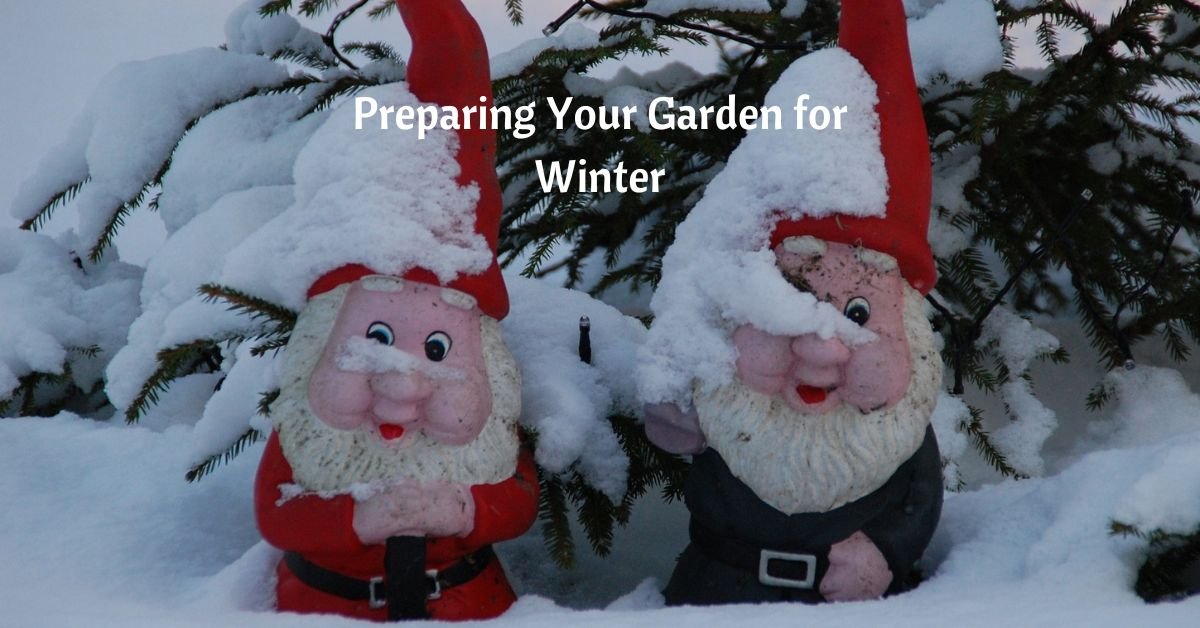As autumn fades, it’s time to turn your attention to winterizing your garden. The amount of work involved can vary depending on how severe the winter is in your area. But even mild winters can present challenges from cold temperatures. Further north, snow and frost can pose bigger risks to your beloved garden.
However, with the right steps and a little preparation, you can help ensure that your plants survive the winter months and thrive once spring arrives. Let’s walk through the process of winterizing your garden, from protecting your plants to preparing your soil and more.
Cleaning and Pruning
The first step to winterizing your garden is cleaning up. Remove any dead or diseased plant material, fallen leaves, and debris. This not only enhances the overall appearance but also reduces the risk of pests and diseases overwintering in your garden.
Next, prune your deciduous trees and shrubs. Pruning in late fall or early winter while they are dormant helps maintain their shape and encourages healthy growth come spring. Remember to remove any dead or diseased branches to prevent the spread of illness. Use the right tools to make the job easier and preserve the health of your plants.
Protecting Perennials
Perennial plants, like roses and daylilies, require special attention. After the first frost, cut back the stems to about 4-6 inches above the ground. This not only tidies up your garden but also helps protect the plants from winter damage.
Apply a layer of mulch around the base of your perennials to help insulate the soil and prevent frost heaving, where soil alternately freezes and thaws, damaging plant roots. A 2-3 inch layer of mulch is typically sufficient.
Covering Delicate Plants
For more delicate plants, consider covering them with burlap or frost cloth to shield them from harsh winter winds and frost. Be sure to provide adequate support, so the coverings don’t crush your plants. Alternatively, you can use frost blankets designed specifically for this purpose.
Preparing Your Soil
Good soil preparation is crucial for a successful garden next spring. Test your soil to assess its pH and nutrient levels. This will help you determine if any amendments are necessary. Most vegetables and flowers thrive in slightly acidic soil with a pH of 6.0 to 7.0.
Spread a 2-3 inch layer of compost over your garden beds and till it in before winter sets in. This gives the organic matter time to break down and benefit your soil.
Properly Storing Tools
Don’t forget your gardening tools. Clean and oil them before storing them for the winter to prevent rust and damage. Store tools in a dry, protected area like a shed or garage.
Protecting Container Plants
If you have potted plants, move them to a sheltered location, such as a garage or against the south side of your house, where they can receive some warmth. If this isn’t possible, insulate the pots with bubble wrap or burlap and elevate them slightly to prevent them from sitting in standing water.
Disconnecting Hoses and Outdoor Faucets
Freezing temperatures can cause water left in hoses and outdoor faucets to expand, leading to burst pipes. Disconnect hoses, drain them thoroughly, and store them in a shed or garage. Turn off the water supply to outdoor faucets and open the faucet to allow any remaining water to drain out.
If you’re going to install pipes that are difficult or impossible to drain – such as those that run under a patio or outdoor kitchen – be sure to properly insulate them before installation.
Wrapping Young Trees
Young trees with thin bark are susceptible to sunscald and frost cracks. To protect them, wrap the trunks with tree wrap or white plastic tree guards. This reflects sunlight and helps maintain a more consistent temperature around the tree.
Planning for Wildlife
As food becomes scarcer in winter, wildlife may turn to your garden for sustenance. Consider installing barriers like fencing or netting to deter hungry animals. You can also set up bird feeders to attract birds, which can help control garden pests.
Monitoring Moisture Levels
Despite the cold, your garden still needs some moisture during the winter. Check the soil moisture periodically and water if it’s too dry. Be cautious not to overwater, as this can lead to root rot in some plants.
Protecting Garden Structures
Inspect your garden structures, such as trellises and arbors, for damage, and make any necessary repairs before winter. Snow and ice can be heavy, and strong winds can be damaging, so secure these structures to prevent winter damage.
Reflecting on Next Year
As you go through these steps, take some time to reflect on the past growing season. What worked well? What didn’t? Use these insights to plan for next year. Consider crop rotation, trying new plants, or adjusting your garden layout.
Winterizing your garden is a vital task to ensure a successful growing season ahead. By protecting your plants, soil, and garden structures, you can minimize winter damage and give your garden the best chance for a vibrant spring revival. With proper care and planning, your garden will thrive year after year, providing you with the joy of gardening and a bountiful harvest.









